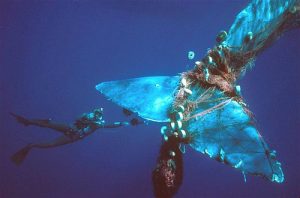We have all heard the debate about the relationship between brain size and intelligence, but a bigger brain has never been confirmed to be related to increased intelligence. Intelligence is a very broad category and now, we have determined many different types of intelligence, including social smarts or social cognition. People who are smart in about other people and in social situations have good social cognition, which has been researched thoroughly in dolphin and whale populations. A recent study revealed that larger, more developed brains are common in marine mammals with higher levels of social interaction. Intelligence as a whole might not be related to brain size, but social cognition very well might be, and not just in marine mammals.

Brains: Bottlenose dolphin (left), Human (right) Source: Wikimedia commons
For many mammals, survival and mating are the main factors that motivate behaviour. If they can successfully live to pass on their genes, they have done their part for their species. Being good at interacting with their own species even more important for many whales and dolphins, such as orcas and bottlenose dolphins, since they are among the most social animals found on the planet.

Bottlenose dolphins: Swimming together Source: pixabay
Kieran Fox, Michael Muthukrishna, and Susan Shultz from the University of British Columbia studied dolphins and whales and found that the mammals with larger, more developed brains relative to their body size had more social interaction. These whales and dolphins can be said to have better social cognition than others with less social interaction. Whales and dolphins that are more social survive longer and reproduce more successfully, passing on their genetics to more offspring, creating more and more social generations after them. Kieran Fox calls this a “positive feedback loop“, since very social parent whales and dolphins create even more social children over time.

Family of Orcas Source: Flickr images
Humans can also benefit from good social cognition, since we are more likely to succeed in our careers and have kids with more social interaction. This research focussed on marine mammals, but it’s entirely possible that larger human brains could also be related to better social cognition. The better we are at interacting with others, the more we can share our knowledge and build our own lives. So if you have a big brain, you too might be more socially equipped for success, just like most bottlenose dolphins and orcas.
-Sydney Inthof





